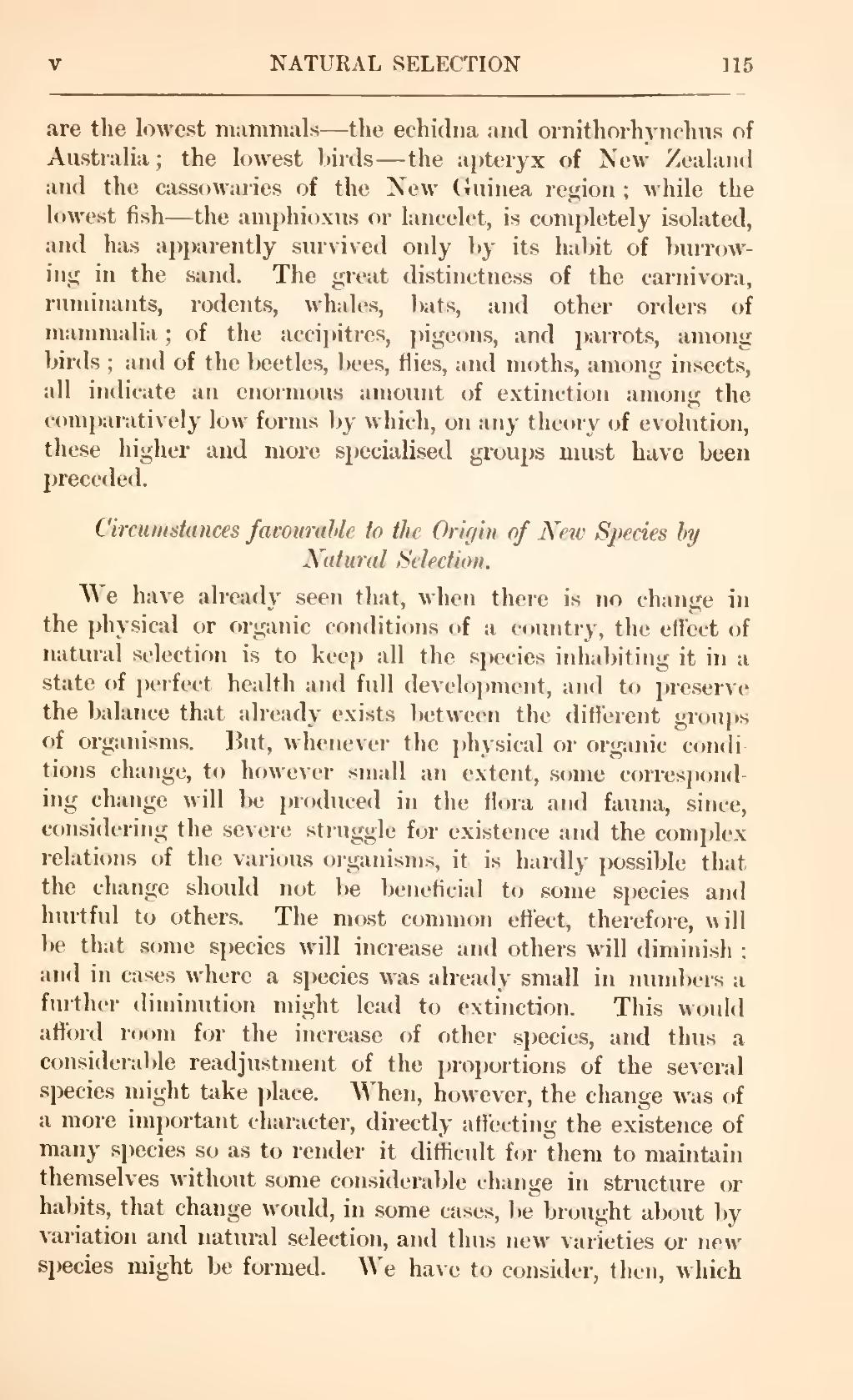are the lowest mammals—the echidna and ornithorhynchus of Australia; the lowest birds—the apteryx of New Zealand and the cassowaries of the New Guinea region; while the lowest fish—the amphioxus or lancelet, is completely isolated, and has apparently survived only by its habit of burrowing in the sand. The great distinctness of the carnivora, ruminants, rodents, whales, bats, and other orders of mammalia; of the accipitres, pigeons, and parrots, among birds; and of the beetles, bees, flies, and moths, among insects, all indicate an enormous amount of extinction among the comparatively low forms by which, on any theory of evolution, these higher and more specialised groups must have been preceded.
Circumstances favourable to the Origin of New Species by Natural Selection.
We have already seen that, when there is no change in the physical or organic conditions of a country, the effect of natural selection is to keep all the species inhabiting it in a state of perfect health and full development, and to preserve the balance that already exists between the different groups of organisms. But, whenever the physical or organic conditions change, to however small an extent, some corresponding change will be produced in the flora and fauna, since, considering the severe struggle for existence and the complex relations of the various organisms, it is hardly possible that the change should not be beneficial to some species and hurtful to others. The most common effect, therefore, will be that some species will increase and others will diminish; and in cases where a species was already small in numbers a further diminution might lead to extinction. This would afford room for the increase of other species, and thus a considerable readjustment of the proportions of the several species might take place. When, however, the change was of a more important character, directly affecting the existence of many species so as to render it difficult for them to maintain themselves without some considerable change in structure or habits, that change would, in some cases, be brought about by variation and natural selection, and thus new varieties or new species might be formed. We have to consider, then, which
